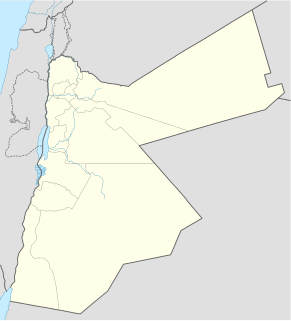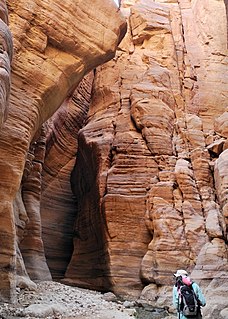 W
WAbila, distinguished as Abila in the Decapolis, and also known for a time as Seleucia, and Raphana, was a city in the Decapolis; the site, now referred to as Qweilbeh, occupies two tells, Tell al-Abila and Khirbet Tell Umm al-Amad.
 W
WAbila was an ancient city east of the Jordan River in Moab, later Peraea, near Livias, about twelve km northeast of the north shore of the Dead Sea. The site is identified with modern Khirbet el-Kafrayn, Jordan and identified on the Madaba Map as an unnamed icon. There is a widely supported theory that in the Hebrew Bible, it is referred to as Abel-Shittim, as well as in the shorter forms Shittim and Ha-Shittim.
 W
WAyn Ghazal is a Neolithic archaeological site located in metropolitan Amman, Jordan, about 2 km north-west of Amman Civil Airport.
 W
WBa'ja is a Neolithic village 14 kilometres (8.7 mi) north of Petra, Jordan. Like the nearby site of Basta, the settlement was built in c. 7000 BC, during the PPNB period. Ba'ja lies at an altitude of around 1,160 metres (3,810 ft), and is only accessible with a climbing route through a narrow, steep canyon.
 W
WCapitolias was an ancient city east of the Jordan River, and is identified with the modern village of Beit Ras in the Irbid Governorate in northern Jordan. Anciently it was a town of Coele-Syria.
 W
WDium or Dion or Dia (Δία) was a city in ancient Coele-Syria mentioned by numerous ancient writers. According to Stephanus of Byzantium, the city was a foundation of Alexander the Great, and named after the city Dium in Macedon. It was also called Pella.
 W
WHeshbon were at least two different ancient towns located east of the Jordan River in what is now the Kingdom of Jordan, historically within the territories of ancient Ammon.
 W
WPella is located in northwest Jordan at a rich water source within the eastern foothills of the Jordan Valley, close to the modern village of Ṭabaqat Faḥl some 27 km (17 mi) south of the Sea of Galilee. The site is situated 130 km (81 mi) north of Amman, a drive of about an hour and a half, and is a shorter half an hour by car from Irbid, in the north of the country. Today the city's ruins, predominately temples, churches and housing, have been partially excavated by teams of archaeologists, and attract thousands of tourists annually but especially in spring, during which time the area is awash with spring flowers.
 W
WPetra, originally known to its inhabitants in as Raqmu or Raqēmō (𐢚𐢛𐢓𐢈), is a historic and archaeological city in southern Jordan. Petra lies around Jabal Al-Madbah in a basin surrounded by mountains which form the eastern flank of the Arabah valley that runs from the Dead Sea to the Gulf of Aqaba. The area around Petra has been inhabited from as early as 7000 BC, and the Nabataeans might have settled in what would become the capital city of their kingdom, as early as the 4th century BC. However, archaeological work has only discovered evidence of Nabataean presence dating back to the second century BC, by which time Petra had become their capital. The Nabataeans were nomadic Arabs who invested in Petra's proximity to the trade routes by establishing it as a major regional trading hub.
 W
WTall Hujayrat Al-Ghuzlan is an archaeological site during the Chalcolithic period that lies 4 km north of modern-day Aqaba city in Jordan. Tall Hujayrat Al-Ghuzlan and the neighboring Tall Al-Magass site in Aqaba both have extensive evidence of significant copper production and trade in the region.
 W
WWadi Numeira is a Wadi in Jordan that is known for its deep gorge cut through the sandstone. It gives its name to the Bronze Age ruins located at its mouth with the Dead Sea. The Wadi also sometimes nicknamed Petra with water.